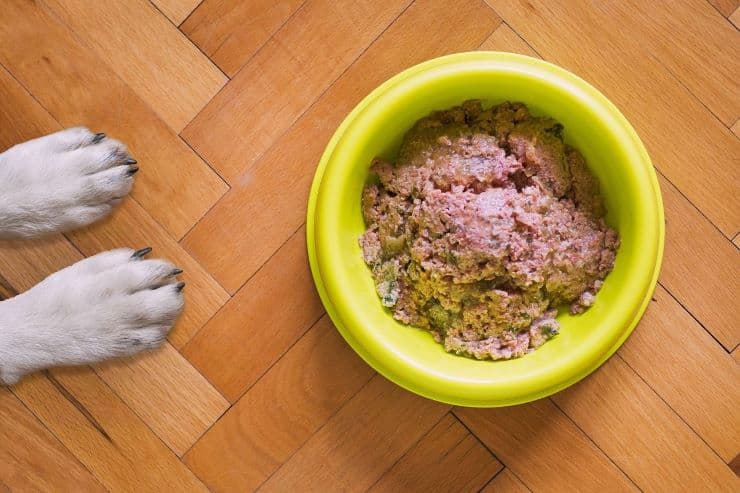Responsible pet owners are always trying to provide their furry friends with the best nutrition. Many of them stick to dog-friendly options like grain-free dog food, which not only caters to canines with sensitivities but also aligns with their evolutionary diet, promoting optimal digestion and overall well-being. Others prefer to offer their dogs a raw diet, which they consider to be more advantageous for the dogs' health and well-being than dry food.
In many cases, it can be true but it is always necessary to study which raw food is adapted to the needs of your dog.
![]()

Photo Credit: mattycoulton/Pixabay
Before diving into the specifics, it's important to grasp the fundamentals of a raw diet. In essence, it involves feeding your dog uncooked, natural ingredients like meat, bones, and organs. Raw diets mimic what dogs would consume in the wild, promoting better digestion and nutrient absorption.
The foundation of a balanced raw diet lies in the quality of ingredients. Opt for fresh, human-grade meats, such as chicken, beef, or lamb. Including a variety ensures a spectrum of nutrients. Additionally, incorporate organs like the liver and kidney for essential vitamins and minerals. Avoid processed or seasoned meats, as additives can be harmful to your pet.
While the focus is often on meat, don't overlook the benefits of incorporating fruits and vegetables that offer important vitamins, minerals, and fiber. Opt for dog-friendly options like carrots, blueberries, or spinach. Ensure they are finely chopped or pureed for easier digestion.
Balancing proteins, fats, and carbohydrates is pivotal for your dog's health. Aim for a ratio of 70-80% meat, 10-15% organs, and 10-15% bone. This balance offers the necessary proteins for muscle development, fats for energy, and calcium from bones for overall bone health.
To cover all nutritional bases, consider adding supplements. Omega-3 fatty acids from fish oil support a healthy coat and skin, while calcium supplements can be crucial if your dog doesn't consume enough bone. Consult your vet to determine the specific needs based on your dog's breed, age, and health conditions.
Every dog is unique, and their nutritional requirements may vary. Keep a keen eye on your dog's weight, coat condition, and energy levels. If you notice any abnormalities, consult your vet promptly. Regular veterinary check-ups ensure your dog's diet aligns with their individual health needs.
Providing a balanced raw diet for your dog demands attention to detail and a commitment to their well-being. By understanding the basics, selecting quality ingredients, maintaining the right ratios, incorporating fruits and vegetables, adding necessary supplements, and monitoring their health, you can ensure your furry companion enjoys a vibrant and healthy life.
You may also like:
We use cookies to offer you a better browsing experience, analyze site traffic, personalize content and ads.